Give today and double your impact!
A very generous donor has offered to match all donations up to $5000!
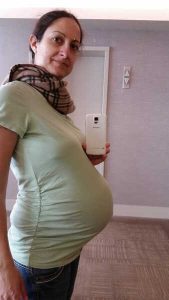 They say practice makes perfect, and I am really good at peeing into a cup. No more splashes or spills – I’ve had a lot of practice.
They say practice makes perfect, and I am really good at peeing into a cup. No more splashes or spills – I’ve had a lot of practice.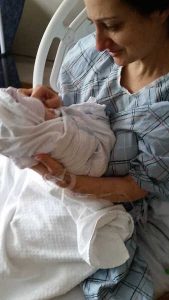
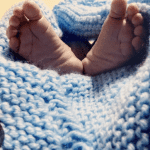 I lost my son Aidan in May of 2020. He was stillborn at 37 weeks. He weighed 7 pounds, 8 ounces and was 20 inches long. He had beautiful red hair. He was perfect. To say that my husband and I were blindsided on an idle Tuesday afternoon would not begin to capture the shock of the day.
I lost my son Aidan in May of 2020. He was stillborn at 37 weeks. He weighed 7 pounds, 8 ounces and was 20 inches long. He had beautiful red hair. He was perfect. To say that my husband and I were blindsided on an idle Tuesday afternoon would not begin to capture the shock of the day.As I began to research stillbirth, I was astonished by the statistics. 1 in 160 pregnancies ends in stillbirth. How can this be? Nearly 24,000 babies are born still in the United States every year–that is 70 per day. What I found to be even more shocking, is that these numbers have not improved in decades. Contrary to popular belief, stillbirth is not a thing of the past.
After I lost Aidan I felt compelled to act, but was unsure of how or where to begin. I had heard of many charities surrounding baby loss pertaining to prematurity, disease, or SIDS. These are wonderful causes and organizations but I was hoping to find something specifically aimed toward stillbirth. And then I found Star Legacy.
In addition to the resources that Star Legacy provides to bereaved families, they also support and conduct research aimed at preventing stillbirth. I knew instantly that this is the organization, the cause, that I was looking for. I fundraised passionately, asking my friends and family to please consider giving if able, with a hope that eventually no parent will have to leave the hospital without their baby, like my husband I did on that day last May.
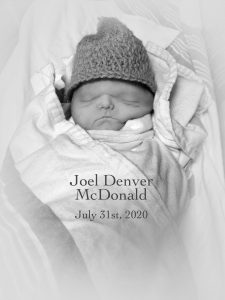 My son Joel was stillborn for unknown reasons on 31 July 2020 at 32 weeks gestational age. At the routine 32 week prenatal appointment my OBGYN couldn’t find a heartbeat. An ultrasound verified my worst fear, my son was dead.
My son Joel was stillborn for unknown reasons on 31 July 2020 at 32 weeks gestational age. At the routine 32 week prenatal appointment my OBGYN couldn’t find a heartbeat. An ultrasound verified my worst fear, my son was dead.
What happened? The question I came to dread still rings clear in my head. When bad things happen, it’s human nature to want to know why, but I didn’t have an answer. I was a healthy 27 year-old pregnant with my first baby. I went to all my prenatal appointments, I had a strong support system, and I didn’t smoke or drink alcohol while pregnant. Nevertheless, my son was given a healthy report at 30 weeks and two weeks later he had no heartbeat. What happened?
I was discharged from the hospital less than 24 hours after giving birth with a pamphlet instructing my husband and I how to grieve, as well as information about a local stillbirth support group that wasn’t meeting due to the COVID-19 pandemic. Although support groups and knowledge of the grieving process are great, it didn’t answer the question I was repeatedly asked. When I finally saw my OBGYN eight weeks after Joel was born, she focused on the future and showed little interest in exploring the pregnancy that abruptly ended in tragedy just months earlier. I listened to hours of the Still A Part of Us podcast, which allows loss parents to share their birth story. While some parents knew (or strongly suspected) their baby died from a cord accident or a genetic abnormality, many sobbed into the microphone as they tried to answer what happened. I found myself crying with them, knowing their pain all too well and wishing they had the answer.
I returned to work ten days after giving birth to my son; four days after picking up his cremated body from the funeral home. Unable to focus on my work, I turned to Google in an attempt to answer, “What happened?” I came across March of Dimes with research focused on infant health and premature birth, Tommy’s which focuses on stillbirth in the UK, and finally found Star Legacy Foundation.
With a searchable research library touting 365 published research articles focused on stillbirth and neonatal death, as well as an accompanying podcast filled with expert interviews, I found myself one step closer to figuring out what happened to my son. I inhaled the information. These weren’t the anecdotal bandaids that fed my emotions, these were scientific studies meticulously carried out by experts in the field of obstetrics and stillbirth. These were the people trying to answer what happened to the 2.6 million babies worldwide who are stillborn every year. These scientists and experts cared about what happened to my son, and they were trying to figure out how to save the 2.6 million babies that would die the next year.
A quick Google search states that research studies cost an average of $50,000 and require scientists to invest ten or more years in the study and publication of research. There are about 3.75 million live births in the US annually and about 24,000 stillbirths in the US annually, which means that my son is part of the 1%. Knowing that stillbirth is statistically very rare doesn’t make the tragedy any easier to bare for the 24,000 American families who will hold a dead baby in their arms this year.
The Star Legacy Foundation estimates that 25% of all stillbirths in the US are preventable. The only way to save 6,000 babies is through research. These scientific studies can answer what happened to those stillborn babies; what happened to my son. Long held policies and obstetric standards of practice can only be changed and updated through published research studies. We have to know not only what happened that made those 24,000 babies die, but also what happened that made those 3.75 million babies live. You may be a parent of a beautiful healthy baby and wondering, “Why should I participate in the Star Legacy Foundation’s Pregnancy Research Project?” The answer is because every pregnancy deserves a happy ending, and stillbirth can happen to anyone. Your participation in a 30 minute online survey could save thousands of babies and help those parents with empty arms answer, “what happened?”
On October 2nd, 2018, it was a normal day like any other. I was 36 weeks pregnant with my oldest daughter Taliyah and my husband and I went in for a Biweekly Non-Stress Test. I never thought in a million years that I would hear the words, “I’m not finding a heartbeat today.”
Now a couple of days before I did notice that Taliyah wasn’t moving as much as she normally did, but I didn’t think anything of it because I was always told that babies don’t move a whole lot towards the end of pregnancy. I now know that statement isn’t true.
I was induced on October 3rd, 2018 and Taliyah Marie Brown was born sleeping on October 4th, 2018. I was later told that the death of my daughter was caused by a Silent Placenta Abruption of an unknown cause. Even 3 years later I still don’t know what happened.
Star Legacy Foundation came into my life when my Bereavement Coordinator gave me a brochure. That’s all it took, something as simple as a piece of paper, for my life to change for the better. I am extremely blessed to be working with Star Legacy Foundation as Chapter Chair of the state of Nebraska.
Our mission is to provide research, education, awareness, advocacy, and family support. Research is so important because with our Pregnancy Research Project we can gather information and try to find answers as to why a tragedy such as a loss or stillbirth happens and what causes it.
We are here to remove the stigma and silence of pregnancy loss, stillbirth, and infant death. No family should ever be silenced and their child(ren) name(s) should be said in their memory as well as their story.
~Shelby Brown~
Stillbirthday Adoption, Bereavement, and Birth Doula, Chapter Chair for Nebraska, Peer Companion, and Bereavement Photographer
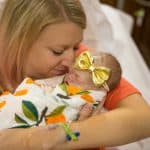 Our first daughter, Juniper, was unexpectedly stillborn at full term, on August 9, 2018. My pregnancy was closely monitored by MFM (maternal fetal medicine) because of complications with preeclampsia, growth restriction, and a small placenta. When we heard the words “there is no heartbeat” at my last regularly scheduled appointment just days before my planned induction, we were stunned. Absolutely shocked. How could our baby die after being watched so closely?
Our first daughter, Juniper, was unexpectedly stillborn at full term, on August 9, 2018. My pregnancy was closely monitored by MFM (maternal fetal medicine) because of complications with preeclampsia, growth restriction, and a small placenta. When we heard the words “there is no heartbeat” at my last regularly scheduled appointment just days before my planned induction, we were stunned. Absolutely shocked. How could our baby die after being watched so closely?Like many families who experience the tragedy of stillbirth, it hit ours without warning, in what had otherwise been a textbook healthy pregnancy. We lost our first son at 36 weeks gestation, long after we had considered ourselves “safe” from the threat of miscarriage and at the point where we no longer feared the baby arriving too early. That was probably the part that stung the most – our baby could have lived, if only he had been born prematurely.
A question that haunts most stillbirth parents is “why did this happen”? Yet far too many families never receive a definitive cause of death, or any indication of how it could have been prevented. One of the doctors who cared for us in the hospital likened stillbirth to “SIDS, on this side of birth.” What he meant is, I think, that the medical profession simply doesn’t know much about why babies die without any warning, regardless of whether it is a stillbirth or neonatal death.
It wasn’t until I learned about the Star Legacy Foundation that I realized there is actually a lot more to know about stillbirth risk factors and prevention than I had initially thought. Someone in my support group shared a link to the 2017 Stillbirth Summit, and I was grateful to learn that there was an organization dedicated to addressing these issues head-on through awareness, outreach, and most importantly, research.
I dove into the materials and read about the important work of many doctors and researchers focusing on stillbirth prevention and care. At the same time, I was desperately trying to get as much information I could from my own doctors, as well as seeking a second opinion from a perinatologist at one of the premier research hospitals in the country. The doctor who gave our second opinion actually confused us more, and cited statistics that, upon further examination, were based on studies of an entirely different condition than the one identified in our autopsy report.
Walking through tragedy has some advantages. One of them is that the question “what do I have to lose” becomes much easier to answer. In that spirit, I emailed one of the doctors I had learned about through the Stillbirth Summit to ask if he would meet with us. I expected that he would be too busy to answer my email or would refer me to his administrative office to set up an appointment. To my surprise, he personally emailed back the next day and offered to have a video call with my husband and me the following week. I learned more during that call than during the many hours I spent with all of the doctors I had met with previously.
Star Legacy’s commitment to supporting stillbirth research was my primary reason for wanting to be involved in this organization. In my experience, the doctors and researchers who are involved in Star Legacy share a unique commitment to finding answers to the specific questions that stillbirth families face are asking. Since helping launch the San Francisco Bay Area Chapter in 2020, I have learned so much more about the important research efforts Star Legacy is helping support. One of these is the Pregnancy Research Project, which I was eager to participate in twice – once for my first child, and another for my rainbow baby born in 2019.
This Giving Tuesday, I hope you will consider making a donation to Star Legacy Foundation, participating in the Pregnancy Research Project, or learning more about the Stillbirth Summit. These efforts in support of stillbirth research mean so much to families like mine, and the thousands who are affected by stillbirth each year.
I want to tell you all a story about a girl named Diana.
I delivered my stillborn beautiful baby girl, Diana Hope on June 13, 2017 at 8:10 pm. She was 4 lbs, 1 oz, 18 inches long. She had dark hair and eyes, just like her dad, Gaetano. He says she looked like me and that makes me happy.
I awoke the morning of Tuesday, June 13th and realized I hadn’t really felt the baby move much the previous day, which wasn’t uncommon, since she never really moved that much to begin with. I started to google “decreased fetal movement” and came across a story about a woman who had the same thing happen to her, went to the doctor only to find out the baby had no heartbeat. I decided to call my OBGYN, just in case. My next appointment was that coming Friday (in three days). I had only been there a week before, exactly. They told me to come in, I did and they took me right away. I texted Gaetano when I got there, I didn’t even tell him I was going. I didn’t think there was any need for concern. I got to my doctors office and they tried to find the heartbeat with the fetal monitor. The nurse said it was staticy. They tried with another, same thing. They told me to go into the sono room. The sonotech clicked and took pictures. Then she said the 6 words that would change my life forever. “I have to get the doctor”. I immediately knew. The doctor came in, and uttered the words that so many people unfortunately have to hear; “I’m sorry, but there is no heartbeat, and you have hardly any fluid”. No heartbeat?? It couldn’t be. I was 36+ 2 days. How could this be?? She asked if there was anyone close. I texted my sister in law, Leigh, who was two blocks away. No answer. I had to get my husband’s number at work-his office is underground and he doesn’t get any service. They moved me to an office. No answer from Leigh yet. I called her. She hadn’t read my message yet. She immediately started to cry. I found Gaetano’s work number. I called him. I don’t even remember exactly what I said. He said “what? What?? I’ll be right there”. He works in Lake Success so I knew it would be a while (at least 35 minutes). In the meantime, Leigh came with my two nieces. I asked what my options would be almost immediately. I could be induced, or a c section and I didn’t have to do it that day. I could wait a few days, I was not in any danger. My husband came then. We went over the options again. Induction was the better choice-for my body especially. We could go in at any time-the hospital would be waiting for us.
We went home and I packed a bag. I started to text a few people. My co-workers; who were expecting me in. My boss; who I had texted earlier in the morning, “I’m going to the doctor, not much movement, I’m sure all is well”. I couldn’t bring myself to call my mother; that was too much for me. We got to the hospital a little while later. They were waiting for me and took me right in. They hooked me up to an IV and tried to take some blood. They had trouble getting blood from me, something that hadn’t happened the whole time I was pregnant. The doctor (who was a different one-but someone I had seen before in the practice) explained to me what was going to happen. Every 4 hours I would get Cyotec (a pill) inserted in me. It could take up to 36 hours. The first pill went in at 12:30. At this time, my brother and Leigh, the kids, my parents and my mother in law came.
I felt no pain at this point. At 4:30 they inserted the second pill. A little while later, the real contractions started. They asked me my pain level, I told them 4. Did I want an epidural yet? No, not yet. I had heard that epidurals can sometimes delay labor even longer. (it was my plan all along to get ANY and EVERY drug possible to not feel any pain). When my contractions started 2 min apart, I asked for some kind of pain meds. They said it would make me loopy, but it never did. It didn’t work on me. The contractions started to get closer and hurt even more. At this point, it was just me, Gaetano, and Leigh. Squeezing Gaetano’s hand on one side and listening to Leigh on how I should breath on the other. If it wasn’t for her, I don’t know how I would’ve been able to make it through them. I am forever grateful towards her. They finally told me I could get my epidural. Again, I don’t know how I stayed still for it. The doctor checked me right after that-and said “OK time to get your husband! It’s time to push-you are 10 cm!” Gaetano wasn’t in the hallway, he went downstairs with everyone else, assuming the epidural would take longer to get in.
I called him to come upstairs at 7:52 pm. Diana was born at 8:10. I was terrified to push, but my doctor guided me and told me I could take my time. She was amazing. After two contractions, and two pushes, she was out. I felt no pain pushing her out. I promise you this. When the doctor said “you have a beautiful baby girl here” …we were surprised. Everyone had said BOY! All along, I didn’t know what it was either. Somehow it was sadder to us that it was a girl; I cannot explain the reason for this.
When she was handed to us, it was probably the saddest moment of my life. We spent some time with her, then told the families to come up, if they wanted, to meet her. (At this time, Gaetano’s brother and wife had come to the hospital too) They all wanted to meet her. I am grateful for this as well. My brother took pictures of the three of us, which I am forever thankful for and thank modern technology every day for this. The families left and we spent more time with her. In total, we spent 5 hours, and 35 min with her.
The burial was something I was dreading. I dread any wake or funeral. But to bury my own daughter? How would I do this? I don’t know how, but I did. It was 8 days later. We got to see her again at the funeral home. We wrote letters to her and put in my niece’s favorite doll in there with her. We put pictures of us and her family in there and a few more items.
We had a short service, just siblings and parents, given by a friend of ours at the cemetery. It was so nice-and added a personal touch. She is buried with other infants in a special space at St. Charles. Where she is, she faces where Gaetano’s father is buried. It feels right.
The love we have received is absolutely amazing and overwhelming, but in a good way. From Thailand to Briland to the UK. People who we haven’t talked to in years. We want people to know Diana was our baby, a person, and something real. Although she cannot live her life here with us, we will never stop remembering her and including her in our lives. Our friends…there are no words. I get choked up thinking of the love they have surrounded us with. I am forever grateful to all of them. We know how much we are loved.
Her name. We didn’t have any names picked out, really! We had gone back and forth in the days before her passing about a few..but we were going over more boys names. Diana Hope came to me right in the hospital, shortly after I delivered her. Diana was an Ancient Roman goddess, of the moon, the hunt and nature. She was also the goddess of childbirth, but more about that in a minute. Diana was also the name of a Latin teacher my husband and I had in high school, who I became very close with…she fought with cancer for years, but sadly passed from it. And Hope…is for what we will have for our future, as Gaetano says.
I have always known I wanted children. I love babies, but I was selfish. I liked coming and going as I pleased. I was vain with my body. It took me 10 years, but we finally said ok let’s do this..and it happened. Another thing that held me back for so long was childbirth. If you know me, you know this is (or was…) my biggest fear. I am not good with pain, I am a hugee baby! Diana, the Ancient Roman Goddess, was the goddess of childbirth, which is something I didn’t find out until days after we named her. I know now it’s really…not that bad! I felt no pain after birth. I would do it again tomorrow, and the day after that, etc. People have said to me-she was given to me for a purpose-whether it was to show me that I could get thru childbirth or something else…well, we’ll see.
My pregnancy- was pretty normal. I did not have any bleeding or spotting. I didn’t have morning sickness, I was maybe nauseous a handful of times. I did not have high BP, nor gestational diabetes. I DID have everything that could go wrong with me, go wrong with just me. I had sinus infections, a bad cough that turned into possible pneumonia. I had a stomach virus and bad headaches in the beginning. I took a fall outside of Babies R US (but didn’t fall on my stomach, my elbow and hands and knees thwarted that!-still went to the ER and checked out -all good). I drank a LOT of water. Diana didn’t really move a lot, but not a cause for concern, or at least so I thought. Towards the end, her movement decreased, but I, like many other women, thought it was because there wasn’t much room left. I was totally wrong and wish I would’ve known that now. I had much testing done after Diana and found out I had a few gene mutations that led to my placenta insufficiency. A baby aspirin a day and lovenox helped with two subsequent pregnancies after; delivering two healthy baby girls.
A few months after Diana passed, I wanted to do something, but I had no idea what; I found Star Legacy and decided to try to hold a 5k/Walk in her honor. The turnout was incredible; a vision I had that turned into a dream. We raised over $25,000 the first year, AND the second year as well. Since then, I have been working with SLF to educate, advocate and help save babies lives. I most recently became the NY Metro Chapter Co-chair; something I only dreamed of a few years back. I love to meet all the other loss moms and families; and hear all about their babies who are in the stars.
Click to listen
The Star Legacy Foundation is a 501(c)(3) non-profit organization dedicated to reducing pregnancy loss and neonatal death and improving care for families who experience such tragedies. We are a community of families, health professionals, researchers, policy makers, and individuals dedicated to helping every pregnancy have a happy ending.
To increase awareness, support research, promote education, and encourage advocacy and family support regarding stillbirth, pregnancy loss, and neonatal death.
Learn more and get involved!

Celebrated on the Tuesday after Thanksgiving, Giving Tuesday is a global day of giving. When someone donates to Star Legacy Foundation on Giving Tuesday, you aren’t just giving money. You’re giving a health professionals, parents and families hope that one day stillbirth and infant death will truly be a rare event.
Absolutely. The security and confidentiality of your information is our highest priority. We use industry-standard SSL (secure socket layer) technology to protect your information and provide a safe and secure environment for online donations. We will not sell, trade or share your personal information with anyone else, nor send donor mailings on behalf of other organizations, and we will only share personal information if you have given us specific permission to do so.
A donation receipt will be sent to the email address provided on this form. Please be sure to keep a copy of the receipt for tax purposes. If you select a recurring donation, a receipt will be sent each month when the donation is processed.
Yes. Star Legacy Foundation is a fully qualified 501(c)(3) organization. Contributions to Star Legacy Foundation are tax-deductible to the extent allowed by law (EIN 26-0227601). To claim a donation as a deduction on U.S. taxes, please keep your email donation receipt as your official record. Receipts are issued via email upon successful completion of a donation.
At Star Legacy Foundation, stewardship is one of our core values. Approximately 90 percent of all funds spent by Star Legacy Foundation each year is dedicated to our programs and projects. We work hard to make sure your gifts are used in the most efficient and effective manner.
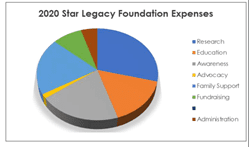
Star Legacy Foundation. All Rights Reserved. Privacy Policy Disclaimer
Registered 501(c)(3) EIN: 26-0227601